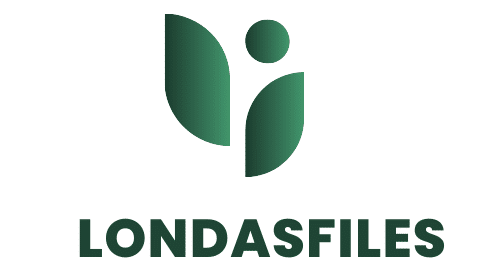What Are the Best Practices for Sustainable Landscaping in Urban Real Estate Projects?

With the increasing degradation of our planet, it comes as no surprise that sustainable practices have infiltrated the urban real estate industry. A significant component of these practices is sustainable landscaping. This approach not only saves the environment but also harnesses the beauty of nature to create a green space within urban locales. This article is here to help you understand the best practices of sustainable landscaping in urban real estate projects.
Emphasizing on Native Plants
The first step in creating an eco-friendly landscape is to focus on native plants. Using local species is essential for a sustainable landscape design.
Additional reading : What Are the Best Approaches to Building Community Support for New Developments?
Native plants are already adapted to the local climate, which means they require less water, fewer fertilizers, and hardly any pesticides. This not only reduces your environmental footprint but also makes maintenance more manageable and cost-effective. Furthermore, native plants provide suitable habitats for local wildlife, contributing to biodiversity.
Choosing native plants also means choosing species that are resistant to local pests and diseases. This can significantly reduce the need for chemical control methods. In addition, native plants tend to have deep root systems, which are excellent for soil stabilization and can prevent erosion.
In parallel : How to Approach Real Estate Development with a Focus on Mental Health and Wellbeing?
Effective Water Management
When it comes to sustainable landscaping, effective water management is crucial. It’s about more than just reducing water use; it’s also about managing rainwater run-off and preserving the quality of groundwater.
Water is a precious resource, and its conservation is one of the major concerns in urban areas. One of the best practices to reduce water use in landscaping is to incorporate drought-resistant plants that require minimal irrigation.
Furthermore, rainwater harvesting systems can be installed to collect and store rainwater for use in irrigation. This not only conserves water but also reduces the load on urban stormwater systems. There are also practices such as drip irrigation and soaker hoses that deliver water directly to plant roots, reducing evaporation and runoff.
Incorporating Green Building Practices
Sustainable landscaping is not just about the plants and irrigation system; it also extends to the building and other structures within the landscape. Incorporating green building practices in the design of these structures can significantly contribute to the sustainability of the landscape.
Green building is a construction practice that reduces the environmental impact of a building. In the context of landscaping, it can involve using materials that are recycled or sustainably sourced. It can also mean designing buildings that are energy-efficient and have a minimal impact on the site.
For example, rain gardens or green roofs can be incorporated into the design of buildings. These features not only contribute to water management and reduce heat islands but also provide habitats for wildlife.
Soil Management and Health
The soil is the foundation of any landscape and its health is paramount for sustainable landscaping. Proper soil management practices can ensure the health of the soil and, in turn, the health of the plants.
Healthy soil is rich in organic matter and has good structure, which allows for proper water absorption and drainage. It’s also teeming with beneficial microorganisms that contribute to plant health.
Soil health can be maintained and improved through practices such as composting and mulching. Composting involves decomposing organic matter to create nutrient-rich soil. On the other hand, mulching involves covering the soil’s surface with organic matter to conserve moisture, reduce weed growth, and improve soil quality.
Adaptive Site Management
Finally, adaptive site management is an essential practice in sustainable landscaping. This approach involves regularly monitoring and adjusting practices based on the changing conditions of the site and the environment.
Adaptive site management can include practices such as adjusting watering schedules based on weather patterns, replacing plants that aren’t thriving with more suitable species, or changing maintenance practices to better suit the needs of the landscape.
By paying close attention to the landscape and being willing to adapt, you can create a more resilient and sustainable landscape that not only benefits the environment but also adds value to your real estate project.
Remember, sustainable landscaping is not a one-size-fits-all solution. It requires careful planning, design, and management to create a landscape that is not only beautiful but also sustainable. It’s all about finding a balance between the built environment and nature, and using resources wisely to create a space that can be enjoyed by future generations.
Prioritizing Energy Efficiency
Incorporating energy efficiency into urban real estate projects through sustainable landscaping is a highly effective green strategy. Energy-efficient practices can help reduce a property’s carbon footprint, lower energy costs, and provide a healthier environment.
Firstly, the strategic placement of trees and plants can affect a building’s energy efficiency. When properly positioned, trees can act as natural windbreaks, reducing the need for heating during cooler months. Similarly, deciduous trees can provide shade during summer, reducing the need for air conditioning.
Secondly, the use of energy-efficient landscaping equipment can also contribute to energy conservation. Electric or battery-operated equipment, such as lawn mowers and trimmers, are generally more energy-efficient and produce fewer emissions than their gas-powered counterparts.
Thirdly, the integration of renewable energy sources, such as solar panels or wind turbines, into the landscape design can supply power to the landscape’s lighting and irrigation systems. This not only reduces energy costs but also reduces reliance on non-renewable energy sources.
Lastly, nightscaping or landscape lighting can enhance the aesthetic appeal of the landscape while being energy efficient. Low-voltage and LED lighting solutions can provide sufficient illumination while consuming less energy. Moreover, using timers, motion sensors, or solar-powered lighting can further improve energy efficiency.
Creating Green Spaces
Another best practice for sustainable landscaping in urban real estate projects is the creation of green spaces. These are areas within the landscape that are covered with vegetation, providing habitats for local wildlife and contributing to biodiversity.
The creation of green spaces can involve various elements, from grassy lawns and flower beds to vegetable gardens and vertical gardens. These green spaces not only provide aesthetic benefits but also improve air quality, provide cooling effects, and reduce noise pollution.
Another important aspect of creating green spaces is the incorporation of habitats for local wildlife. This can be achieved by incorporating features such as bird feeders, bird baths, and insect hotels into the landscape design. These habitats can contribute to local biodiversity and provide opportunities for people to interact with nature.
Furthermore, green spaces can also serve a social function, providing spaces for people to gather, relax, and connect with nature. This can significantly enhance the livability of urban environments and contribute to people’s health and well-being.
Conclusion
In conclusion, the practice of sustainable landscaping in urban real estate projects is a multifaceted process that requires careful planning and execution. It involves the use of native plants, effective water management, incorporation of green building practices, prioritization of soil health, adaptive site management, energy efficiency strategies, and creation of green spaces.
By adopting these practices, urban developers can contribute towards environmental conservation, create aesthetically pleasing spaces, and enhance the value of their real estate projects. As we press forward into a future of increasing urbanization, it is vital to recognize the importance of sustainable landscaping. The benefits extend far beyond simply being eco-friendly; they also encompass improved public health, increased property value, and the overall enhancement of urban living. By implementing these strategies, urban landscapes can become a sanctuary for both people and wildlife, all the while promoting sustainability and stewardship of our planet’s resources.
